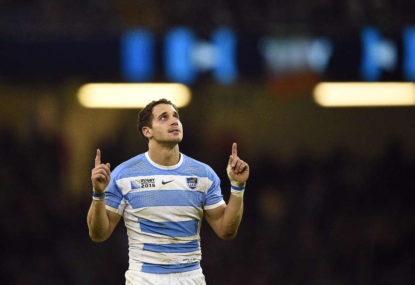As we wait for an official statement to emerge from the SANZAAR powwow in London, I thought it would be a nice change of pace to deviate from the apparent obsessive focus on our tier-one problems and ponder an interesting article I read about T2 rugby and beyond.
This is American Rugby posed a question pondering how to bridge the gap between the hardworking amateurs, who feature heavily in the T2 realms, and professionalism, and an interesting solution was proposed.
The answer, they propose, is a World League. Think essentially an annual mini-Rugby World Cup but featuring only tier two and three nations – a Rugby Confederations Cup, if you will.
According to this proposal World Rugby would utilise the pre-existing regional structures as a means of qualifying teams. Details were thin as to whether this competition would be hosted in one location as per traditional tournaments or in four differing locations across several regions, as is done in the World Baseball Classic, but I certainly did find this proposal rather thought provoking.
Right off the bat it’s a great idea. The opportunity to regularly play against nations you would otherwise not have the chance to compare against is a step in the right direction for the game. Sure, there will be inevitable disparities, but as Georgia and their recent push for more games against tier-one opponents can attest, in order to improve you need to play against better opposition more often.
There are issues of course. Cost is an obvious one, as is the fact that for a number of regional competitions, most notably the Americas Rugby Championship and Pacific Challenge Cup, a number of member nations will be essentially running their A sides – or in case of Argentina, a mixture of A and B.
This could bring into question the validity of any such structure – but though it’s a fair concern, it is not insurmountable if the overall structure were to be tweaked somewhat to turn the proposed World League from being a national team competition to a franchise-based tournament.

While it does appear to be a significant leap, it’s not as large as many would assume. These ‘franchises’ would still for all intents and purposes be national squads, just under a different name. It would allow for the dissonance created by a number of A squads to be cut away while allowing teams to create bases and attract fans.
Looking at the ARC as a prime example – Argentina, the USA and Canada all run secondary squads in the structure, as would Uruguay, depending on scheduling. This structure provides valuable developmental experiences for each team, and if any of these four were to qualify, questions regarding the overall validity of the participants and their overall quality and value would be asked.
This is stripped away franchise model. Instead of it being the USA Selects it could be San Diego, or instead of Argentina XV it could be Buenos Aires et cetera. It would be a similar story in the Pacific Rugby Challenge: instead of it being Junior Japan it could just be Tokyo and so on.
Another tweak would be to expand the length of these tournaments, taking them from single-round competitions to double-round series, with the aim of providing 10 games each prior to qualifying for the World League finals. This would mean some structures would need to be expanded, but that’s not insurmountable.
The biggest obstacle for this will be as it always is: finances. Where will the money come from? In terms of travel and accommodation, the simple answer is World Rugby. World Rugby already provide the funding for these structures, so all that would be required on that front would be an expansion of that commitment. They also should be heavily involved in the sponsorship and broadcast side of the business.
Why should they do this? Because this structure would help the development of the game, and depending on how many regional structures are involved , it could directly develop the overall competitiveness of the 20 tier-two and tier-three nations at once, including those several larger markets World Rugby are keen to grow.
As for the professionalism side, that’s a little more tricky and would fall largely on the National Unions in conjunction with World Rugby to overcome. Remuneration should be relative to the individual nations at first, which should provide players with a living wage at least for the period of the competition.
It would take a lot of work to achieve, but a World League would be more than worthwhile. As a structure it would provide a solid platform for those nations involved to grow, and it would allow for new nations to enter the fray when ready.
As the first building block, here are my ideal participants and structure.
World League Americas: Vancouver, San Diego, Santiago, Montevideo, Sao Paulo and Buenos Aires.
World League Asia-Pacific: Seoul, Hong Kong, Tokyo, Fiji, Samoa and Tonga.
World League Europe: Madrid, Heidelberg, Tbilisi, Brussels, Bucharest and Krasnodar.
World League Africa: Nairobi, Windhoek.































































































